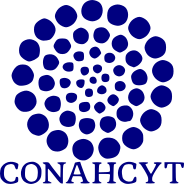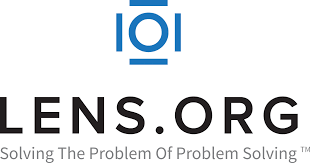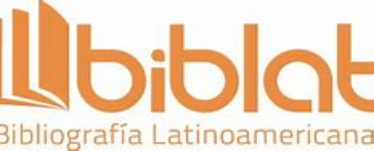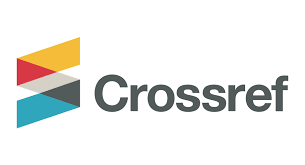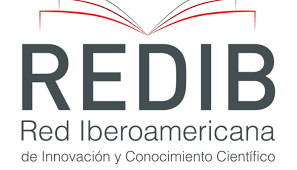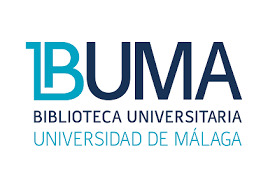Fitoquímicos y Propiedades Nutraceúticas de Durazno (Prunus persica L.) Cultivado en Zacatecas
DOI:
https://doi.org/10.18387/polibotanica.53.10Palabras clave:
Fitoquímicos, capacidad antioxidante, actividad antihipertensiva, potencial antimicrobianoResumen
El objetivo del presente estudio fue evaluar el contenido de fitoquímicos (flavonoides, taninos compuestos fenólicos y carotenoides) y propiedades nutraceúticas como capacidad antioxidante por los métodos DPPH y ABTS, así como la actividad antihipertensiva y antimicrobiana del durazno criollo cultivado en el estado de Zacatecas. El contenido de flavonoides, taninos y fenólicos fue de 247 mg equivalentes de catequina (EC)/100 g, 410 mg equivalentes de catequina (EC)/100 g y 452 mg equivalentes de ácido gálico (EAG)/100 g, respectivamente y de carotenoides 195 µg equivalentes de β-caroteno (EBC). En cuanto a la capacidad antioxidante, el durazno presento niveles de 3858 y 6215 μmol equivalentes de Trolox (ET)/100 g para DPPH y ABTS, respectivamente. La actividad antihipertensiva fue evaluada mediante la inhibición de la enzima convertidora de angiotensina I, presentando una inhibición del 58% y un potencial antimicrobiano en cepas bacterianas de Salmonella typhimurium, Escherichia coli, Listeria monocytogenes y Staphylococcus aureus.
Referencias
Adom, K. K., & Liu, R.H. (2002). Antioxidant activity of grains. Journal of Agriculture and Food Chemistry, 50(21), 6182-6187. doi: 10.1021/jf0205099
Álvarez-Suarez, J. M., Giampieri, F., Tulipani, S., Casoli, T., Di Stefano, G., González-Paramás, A. M., Santos-Buelga, C., Busco, F., Quiles, J. L., Cordero, M. D., Bompadre, S., Mezzetti, B., & Battino, M. (2014). One-month strawberry-rich anthocyanin supplementation ameliorates cardiovascular risk, oxidative stress markers and platelet activation in humans. The Journal of Nutritional Biochemistry, 25(3), 289-294. doi: 10.1016/j.jnutbio.2013.11.002
Alves, R. E., Brito, E. A., Rufino, M. S. M., & Sampaio, C. G. (2008). Antioxidant activity measurement in tropical fruits: A case study with acerola. Acta Horticulturae, 773(1), 299–305. doi: 10.17660/ActaHortic.2008.773.45
Al-Zoreky, N. S. (2009). Antimicrobial activity of pomegranate (Punica granatum L.) fruit peles. International Journal of Food Microbiology, 134(3), 244-248. doi: 10.1016/j.ijfoodmicro.2009.07.002
Arakawa, H., Maeda, M., Okubo, S., & Shimamura, T. (2004). Role of hydrogen peroxide in bactericidal action of catechin. Biological and Pharmaceutical Bulletin, 27(3), 277–81. doi: 10.1248/bpb.27.277
Arion, C. M., Tabart, J, Kevers, C., Niculaua, M., Filimon, R., Beceanu, D., & Dommes, J. (2014). Antioxidant potential of different plum cultivars during storage. Food Chemistry, 146(1), 485–491. doi: 10.1016/j.foodchem.2013.09.072
Awad, M. A., de Jager, A., & van Westing, L. M. 2000. Flavonoid and chlorogenic acid levels in apple fruit: characterisation of variation. Scientia Horticulturae, 83(3), 249-263. doi: 10.1016/S0304-4238(99)00124-7
Battino, M., Beekwilder, J., Denoyes-Rothan, B., Laimer, M., McDougall, G. J., & Mezzetti, B. (2009). Bioactivities of berries relevant to human health. Nutrition Reviews, 67(1), 145-50. doi: 10.1111/j.1753-4887.2009.00178.x
Ben Ahmed, C., Ben Rouina, B., Sensoy, S., & Boukhriss, M. (2009). Saline wáter irrigation effects on fruit development, quality, and phenolic composition of virgin olive oils, cv. Chemlali. Journal of Agricultural and Food Chemistry, 57(7), 2803–2811. doi: 10.1021/jf8034379
Belhadj, F., Somrani, I., Aissaoui, N., Messaoud, C., Boussaid, M., & Nejib-Marzouki, M. (2016). Bioactive compounds contents, antioxidant and antimicrobial activities during ripening of Prunus persica L. varieties from the North West of Tunisia. Food Chemistry, 204(1), 29–36. doi: 10.1016/j.foodchem.2016.02.111
Borges-Argaez, R., Canche-Chay, C. I., Pena-Rodríguez, L. M., Said-Fernandez, S., & Molina-Salinas, G. M. (2007). Antimicrobial activity of Diospyros anisandra. Fitoterapia, 78(5), 370–372. doi: 10.1016/j.fitote.2007.03.004
Campos, D., Noratto, G., Chirinos, R., Arbizu, C., Roca, W., & Cisneros‐Zevallos, L. (2006). Antioxidant capacity and secondary metabolites in four species of Andean tuber crops: native potato (Solanum sp.), mashua (Tropaeolum tuberosum Ruiz & Pavón), Oca (Oxalis tuberosa Molina) and ulluco (Ullucus tuberosus Caldas). Journal of the Science of Food and Agriculture, 86(10), 1481-1488. doi: 10.1002/jsfa.2529
Cardador-Martinez, A., Loarca-Piña, G., & Oomah, B. D. (2002). Antioxidant activity in common beans (Phaseolus vulgaris L.). Journal of Agricultural and Food Chemistry, 50(24), 6975-6980. doi: 10.1021/jf020296n
Cheplick, S., Kwon, Y., Bhowmik, P., & Shetty, K. (2010). Phenolic-linked variation in strawberry cultivars for potential dietary management of hyperglycemia and related complications of hypertension. Bioresource Technology, 101(1) 404–413. doi: 10.1016/j.biortech.2009.07.068
Chinnam, N., Dadi, P. K., Sabri, S. A., Ahmad, M., Kabir, M. A., & Ahmad, Z. (2010). Dietary bioflavonoids inhibit Escherichia coli ATP synthase in a differential manner. Intrenational Journal of Biological Macromolecules, 46(5), 478–86. doi: 10.1016/j.ijbiomac.2010.03.009
Chua, M. T., Tung, Y. T., & Chang, S. T. (2008). Antioxidant activities of ethanolic extracts from twigs of Cinnamomum osmophleum. Bioresource Technology, 99(6), 1918-25. doi: 10.1016/j.biortech.2007.03.020
Clerici, M. T. P. S., & Carvalho-Silva, L. B. 2011. Nutritional bioactive compounds and technological aspects of minor fruits grown in Brazil. Food Research International. 44(7), 1658–1670. doi: 10.1016/j.foodres.2011.04.020
Corral-Aguayo, R. D., Yahia, E. M., Carrillo-Lopez, A., & Gonzalez-Aguilar, G. (2008). Correlation between some nutritional components and the total antioxidant capacity measured with six different assays in eight horticultural crops. Journal of Agricultural and Food Chemistry, 56(22), 10498–10504. doi: 10.1021/jf801983r
Crecente-Campo, J., Nunes-Damaceno, M., Romero-Rodríguez, M. A., & Vázquez-Odériz, M. L. (2012). Color, anthocyanin pigment, ascorbic acid and total phenolic compound determination in organic versus conventional strawberries (Fragaria x ananassa Duch, cv Selva). Journal of Food Composition and Analysis, 28(1), 23–30. doi: 10.1016/j.jfca.2012.07.004
Cushnie, T. P. T., & Lamb, A. J. (2011). Recent advances in understanding the antibacterial properties of flavonoids. International Journal of Antimicrobial Agents, 38(2), 99– 107. doi: 10.1016/j.ijantimicag.2011.02.014
Del Bubba, M., Giordani, E., Pippucci, L., Cincinelli, A., Checchini, L., & Galvan, P. (2009). Changes in tannins, ascorbic acid and sugar content in astringent persimmons during on-tree growth and ripening and in response to different postharvest treatments. Journal of Food Composition and Analysis, 22(7), 668–677. doi: 10.1016/j.jfca.2009.02.015
Deyanira, O., Enrique, J. F., Alejandro, Z., Armando, H. A., Jaime, T., & Laura, A. (2010). Inhibition of angiotensin convertin enzyme (ACE) activity by the anthocyanins delphinidin- and cyanidin-3-Osambubiosides from Hibiscus sabdariffa. Journal of Ethnopharmacology, 127(1), 7-10. doi: 10.1016/j.jep.2009.09.059
Espina, L., Somolinos, M., Lorán, S., Conchello, P., García, D., & Pagán, R. (2011). Chemical composition of commercial citrus fruit essential oils and evaluation of their antimicrobial activity acting alone or in combined processes. Food Control, 22(6), 896-902. doi: 10.1016/j.foodcont.2010.11.021
Fernandez, K., & Labra, J. (2013). Simulated digestion of proanthocyanidins in grape skin and seed extracts and the effects of digestion on the angiotensin I-converting enzyme (ACE) inhibitory activity. Food Chemistry, 139(1-4), 196-202. doi: 10.1016/j.foodchem.2013.01.021
Floegel, A., Kim, D. O., Chung, S. J., Koo, S. I., & Chun, O. K. (2011). Comparison of ABTS/DPPH assays to measure antioxidant capacity in popular antioxidant-rich US foods. Journal of Food Composition and Analysis, 24(7), 1043–1048. doi: 10.1016/j.jfca.2011.01.008
Giampieri, F., Alvarez-Suarez, J. M., & Battino, M. (2014). Strawberry and human health: Effects beyond antioxidant activity. Journal of Agricultural and Food Chemistry, 62(1) 3867–3876. doi: 10.1021/jf405455n
Gil, M. I., Tomás-Barberán, F. A., Hess-Pierce, B., & Kader, A. A. (2002). Antioxidant Capacities, Phenolic Compounds, Carotenoids, and Vitamin C Contents of Nectarine, Peach, and Plum Cultivars from California. Journal of Agricultural and Food Chemistry, 50(17), 4976-4982. doi: 10.1021/jf020136b
Gradisar, H., Pristovsek, P., Plaper, A., & Jerala, R. (2007). Green tea catechins inhibit bacterial DNA gyrase by interaction with its ATP binding site. Journal of Medicinal Chemistry, 50(2), 264–71. doi: 10.1021/jm060817o
Hagerman, A. E. & Butler, L. G. (1991). Herbivores: Their interactions with secondary plant metabolites. Urbana, Il: Gerald A. Rosenthal and May R. Berenbaum
Haring, D. A., Suter, D., Amrhein, N., & Luscher, S. (2007). Biomass allocation is an important determinant of the tannin concentration in growing plants. Annals of Botany, 99(1), 111–120. doi: 10.1093/aob/mcl227
Herrera-Chalé, F. G., Ruiz-Ruiz, J. C., & Acevedo-Fernández, J. J. (2014). ACE inhibitory, hypotensive and ant ioxidant pept ide fract ions from Mucuna pruriens proteins. Process Biochemistry, 49(10), 1691-1698. doi: 10.1016/j.procbio.2014.06.021
Hind, A. B., Abu-Bakr, A., & Abu, G. (2003). Compositional changes during guava fruit ripening. Food Chemistry, 80(4), 557–563. doi: 10.1016/S0308-8146(02)00345-X
Honest, N. E., Wang, K. K., Zhao, L., Zhou, M., & Hu, Z. (2018). Enrichment and biotransformation of phenolic compounds from litchi pericarps with angiotensin I-converting enzyme (ACE) inhibition activity. LWT - Food Science and Technology, 87(1), 301-309. doi: 10.1016/j.lwt.2017.09.003
Hu, K., Dars, A. G., Liu, Q., Xie, B., & Sun, Z. (2018). Phytochemical profiling of the ripening of Chinese mango (Mangifera indica L.) cultivars by real-time monitoring using UPLC-ESI-QTOF-MS and its potential benefits as prebiotic ingredients. Food chemistry, 256(1), 171-180. doi: 10.1016/j.foodchem.2018.02.014
Ignat, I., Volf, I., & Popa, V. I. (2011). A critical review of methods for characterization of polyphenolic compounds in fruits and vegetables. Food Chemistry, 126(1) 1821–1835. doi: 10.1016/j.foodchem.2010.12.026
Kchaou, W., Abbès, F., Ben Mansour, R., Blecker, C., Attia, H., & Besbes, S. (2016). Phenolic profile, antibacterial and cytotoxic properties of second grade date extract from Tunisian cultivars (Phoenix dactylifera L.). Food Chemistry, 194(1), 1048–1055. doi: 10.1016/j.foodchem.2015.08.120
Kim, D. O., Jeong, S. W., & Lee, C. Y. (2003). Antioxidant capacity of phenolic phytochemicals from various cultivars of plums. Food Chemistry, 81(3), 321–326. doi: 10.1016/S0308-8146(02)00423-5
Kim, H., Moon, J. Y., Kim, H., Lee, D. S., Cho, M., Choi, H. K., Kim, Y. S., Mosaddik, A., & Kim-Cho, S. (2010). Antioxidant and antiproliferative activities of mango (Mangifera indica L.) flesh and peel. Food Chemistry, 121(2), 429–436. doi: 10.1016/j.foodchem.2009.12.060
Koleckar, V., Kubikova, K., Rehakova, Z., Kuca, K., Jun, D., & Jahodar, L. (2008). Condensed and hydrolysable tannins as antioxidants influencing the health. Mini-Reviews in Medicinal Chemistry, 8(5), 436-447. doi: 10.2174/138955708784223486
Kurz, C., Carle, R., & Scheiber, A. (2008). Characterisation of cell wall polysaccharide profiles of apricots (Prunus armeniaca L.), peaches (Prunus persica L.) and pumpkins (Cucurbita sp.) for the evaluation of fruit product authenticity. Food Chemistry, 106(1), 421–430. doi: 10.1016/j.foodchem.2007.05.078
Kristl, J., Slekovec, M., Tojnko, S., & Unuk, T. (2011). Extractable antioxidants and non-extractable phenolics in the total antioxidant activity of selected plum cultivars (Prunus domestica L.): Evolution during on-tree ripening. Food Chemistry, 125(1) 29–34. doi: 10.1016/j.foodchem.2010.08.027
Määttä-Riihinen, K. R., Kamal-Eldin, A., Mattila, P. H., González-Paramás, A. M., & Törrönen, A. R. (2004). Distribution and contents of phenolic compounds in eighteen Scandinavian berry species. Journal of Agricultural and Food Chemistry, 52(14), 4477–4486. doi: 10.1021/jf049595y
McDougall, G. J., Kulkarni, N. N., & Stewart, D. (2009). Berry polyphenols inhibit pancreatic lipase activity in vitro. Food Chemistry, 115(1), 193–199. doi: 10.1016/j.foodchem.2008.11.093
Mohsen, S. M., & Ammar, A. S. M. (2009). Total phenolic contents and antioxidant activity of corn tassel extracts. Food Chemistry, 112(3), 595–598. doi: 10.1016/j.foodchem.2008.06.014
Mokrani, A., & Madani, K. (2016). Effect of solvent, time and temperature on the extraction of phenolic compounds and antioxidant capacity of peach (Prunus persica L.) fruit. Separation and Purification Technology, 162(13), 68-76. doi: 10.1016/j.seppur.2016.01.043
Lacaille-Dubois, M., Franck, U., & Wagner, H. (2001). Search for potential angiotensin converting enzyme (ACE)-inhibitors from plants. Phytomedicine, 8(1) 47-52. 10.1078/0944-7113-00003
Landete, J. M. (2012). Updated knowledge about polyphenols: Functions, bioavailability, metabolism, and health. Critical Reviews in food Science and Nutrition. 52(10), 936-948. doi: 10.1080/10408398.2010.513779
Laurent, S. (2017). Antihypertensive drugs Review. Pharmacological Research, 124(1), 116–125. doi: 10.1016/j.phrs.2017.07.026
Liu, H., Cao, J., & Jiang, W. (2015). Evaluation and comparison of vitamin C, phenolic compounds, antioxidant properties and metal chelating activity of pulp and peel from selected peach cultivars. LWT Food Science and Technology, 63(2), 1042–1048. doi: 10.1016/j.lwt.2015.04.052
Oliveira, D. A., Salvador, A. A., Smania, A., Smania, E. F. A., Maraschin, M., & Ferreira, S. R. S. (2013). Antimicrobial activity and composition profile of grape (Vitis vinifera) pomace extracts obtained by supercritical fluids. Journal of Biotechnology, 164(3), 423-432. doi: 10.1016/j.jbiotec.2012.09.014
Park, Y. S., Leontowicz, H., Leontowicz, M., Namiesnik, J., Suhaj, M., Cvikrova, M., Martincova, O., Weisz, M., & Gorinstein, S. (2011). Comparison of the contents of bioactive compounds and the level of antioxidant activity in different kiwifruit cultivars. Journal of Food Composition and Analysis, 24(7), 963–970. doi: 10.1016/j.jfca.2010.08.010
Park, Y. S., Namiesnik, J., Vearasilp, K., Leontowicz, H., Leontowicz, M., Barasch, D., Nemirovski, A., Trakhtenberg, S., & Gorinstein, S. (2014). Bioactive compounds and the antioxidant capacity in new kiwi fruit Cultivars. Food Chemistry, 165(1), 354–361. doi: 10.1016/j.foodchem.2014.05.114
Prior, R. L., & Gu, L. (2005). Occurrence and biological significance of proanthocyanidins in the American diet. Phytochemistry, 66(18), 2264–80. doi: 10.1016/j.phytochem.2005.03.025
Prior, R. L., & Wu, X. (2013). Diet antioxidant capacity: Relationships to oxidative stress and health. American Journal of Biomedical Sciences, 5(2), 126–139. doi: 10.5099/aj130200126
Puerta-Gomez, A. F. & Cisneros-Zevallos, L. (2011). Postharvest studies beyond fresh market eating quality: Phytochemical antioxidant changes in peach and plum fruit during ripening and advanced. Postharvest Biology and Technology, 60(3) 220-224. doi: 10.1016/j.postharvbio.2011.01.005
Re, R., Pellegrini, N., Proteggente, A., Pannala, A., Yang, M. & Rice-Evans C. (1999). Antioxidant activity applying an improved ABTS radical cation decolorization assay. Free Radical Biology and Medicine, 26(9), 1231–1237. doi: 10.1016/S0891-5849(98)00315-3
Saidani, F., Giménez, R., Aubert, C., Chalot, G., Betrán, J. A., & Gogorcena, Y. (2017) .Phenolic, sugar and acid profiles and the antioxidant composition in the peel and pulp of peach fruits. Journal of Food Composition and Analysis, 62(1), 126–133. doi: 10.1016/j.jfca.2017.04.015
Singleton, V. L., Orthofer, R., & Lamuele-Raventós. R. M. (1999). Analysis of total phenols and other oxidation substrates and antioxidant by means of Folin-Ciocalteu reagent. Methods in enzymology, 299(1), 152-165. doi: 10.1016/S0076-6879(99)99017-1
Serrano, J., Pupponen-Pimia, R., Dauer, A., Aura, A. M., & Saura-Calixto, F. (2009). Tannins: Current knowledge of food sources, intake, bioavailability and biological effects. Molecular Nutrition and Food Research, 53(2), 310-329. doi: 10.1002/mnfr.200900039
Surveswaran, S., Cai, Z. Y., Cark, H., & Sun, M. (2007). Systematic evaluation of natural phenolic antioxidant from 133 Indian medicinal plants. Food Chemistry, 102(3), 938–953. doi: 10.1016/j.foodchem.2006.06.033
Thaipong, K., Boonprakoba, U., Crosbyb, K., Cisneros-Zevallos, L., & Byrne, D.H. (2006). Comparison of ABTS, DPPH, FRAP, and ORAC assays for estimating antioxidant activity from guava fruit extracts. Journal of Food Composition and Analysis, 19(6) 669–675. doi: 10.1016/j.jfca.2006.01.003
Wang, L., Saito, M., Tatsumi, E. & Li, L. (2003). Antioxidative and Angiotensin I-Converting Enzyme Inhibitory Activities of Sufu (Fermented Tofu) Extracts. Japan Agricultural Research Quarterly, 37(2) 129-132. doi: 10.6090/jarq.37.129
Wang, Y., Chun, O.K., & Song, W.O. (2013). Plasma and dietary antioxidant status as cardiovascular disease risk factors: A review of human studies. Nutrients, 5(8), 2969-3004. doi: 10.3390/nu5082969
Wanger, A., (2007). Disk diffusion test and gradient methodologies. Boca Raton, FL: Schwalbe R, Steele-Moore & Goodwin.
Weber, D., & Grune, T. (2012). The contribution of beta-carotene to vitamin A supply of humans. Molecular Nutrition and Food Research, 56(2), 251-258. doi: 10.1002/mnfr.201100230
Wilson, J., Hayes, M., & Carney, M. (2011). Angiotensin-I-converting enzyme and prolyl endopeptidase inhibitory peptides from natural sources with a focus on marine processing by-products. Food Chemistry, 129(2), 235-244. doi: 10.1016/j.foodchem.2011.04.081
Wu, D., Kong, Y., Han, C., Chen, J., Hu, L., & Jiang, H. (2008). D-alanine:D-alanine ligase as a new target for the flavonoids quercetin and apigenin. International Journal of Antimicrobial Agents, 32(5), 421–6. doi: 10.1016/j.ijantimicag.2008.06.010
Xu, B. J., Yuan, S. H., & Chang, S. K. C. (2007). Comparative Analyses of Phenolic Composition, Antioxidant Capacity, and Color of Cool Season Legumes and Other Selected Food Legumes. Journal of Food Science, 72(2), 167-177. doi: 10.1111/j.1750-3841.2006.00261.x
Xu, B. J., & Chang, S. K. C. (2007). A Comparative Study on Phenolic Profiles and Antioxidant Activities of Legumes as Affected by Extraction Solvents. Journal of Food Science, 72(2), 159-66. doi: 10.1111/j.1750-3841.2006.00260.x
Zarai, Z., Kadri, A., Ben Chobba, I., Ben Mansour, R., Bekir, A., Mejdoub, H., & Gharsallah N. (2011). The in vitro evaluation of antibacterial, antifungal and cytotoxic properties of Marrubium vulgare L. essential oil grown in Tunisia. Lipids in Health and Disease, 161(1), 1–10. doi: 10.1186/1476-511X-10-161
Publicado
Número
Sección
Licencia

Polibotánica por Departamento de Botánica de la Escuela Nacional de Ciencias Biológicas del Instituto Politécnico Nacional se distribuye bajo una Licencia Creative Commons Atribución-NoComercial-CompartirIgual 4.0 Internacional.



